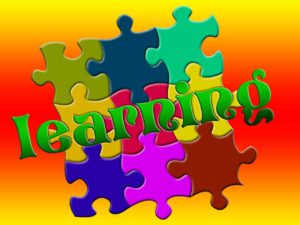
Homeschooling Children Learning Disabilities With The LeapFrog Tablet
The Usefulness of Problem-Based Learning in Virtual Environments
The process of learning conveyance is experiencing a significant change because of the speedy adoption of virtual environments. In any learning activity, problem-based learning is important for appropriate comprehension and maximum contribution by a learner. A learning management system must replicate real-world problems to enhance comprehension of the subject matter.
Compared to traditional classrooms, virtual environments can take problem-based learning to an unheard-of level. Advanced tools and applications allow sufficient space for meaningful discussions and problem-solving sessions over a virtual learning platform.
Indeed, even traditional classroom courses make use of problem-based learning techniques. Students are asked to solve some problems on a given topic after studying it.
The actual goal behind problem-based learning was to enhance the comprehension of learners. However, it has now taken the type of activity where students are relied upon to give demonstrate answers to a set of problems. This learning activity is not student-driven at all.
The Benefits of Problem Based Learning
Dissimilar to a traditional classroom setting, virtual environments have successfully used problem-based learning techniques for maximum benefits:
1. It is easy to demonstrate the practical application of course content.
2. Students can be prepared to handle unseen real-world problems
3. It is presently possible to continually refine questions and answers on a learning management system.
4. Students and teachers can debate solutions, ideas, and concepts.
5. All learners in the activity can mutually chip away at a problem and suggest possible solutions.
Understanding the distinction between information and learning is important.
It is easy to convey course content as content information, pictures, illustrations, and presentations. However, it is important to understand the distinction between information and learning. Imparting learning is a process that has to be handled carefully not at all like simple information conveyance. Successful problem based learning over virtual environments is about making the best use of information, graphics, and multimedia so as to convey information.
How Much Pressure Should You Put on Your Child to Learn?
This is a question I get asked a considerable measure. Parents may see their children either not doing homework, or not doing it well, or just want to know how much extra function they can give their kids.
Parents are concerned either that in the event that they don’t pressure their child to learn nothing will complete, or that in the event that they put on too much pressure their child will crack and may even stop working

All things considered, I don’t believe that parents should put ANY pressure on children to learn. Here’s the reason –
1. Children are sufficiently under pressure already. This pressure comes from school expectations around homework and their own expectations about the work they have to do.
2. Putting pressure on your child to learn has a negative impact on your relationship with your child. This relationship is extremely special and the last thing you want to do is to put it under stress.
3. It takes too much out of you. Your activity is to ‘parent’ your child not compel him or her to learn. You have enough to do as it is, whether you start putting pressure on your child you will get exhausted.
The questions should be – “How would I set things up so I don’t have to pressure my child to learn?”
And the answer is…
1. Make sure that you and your child are clear about expectations around how well schoolwork and homework will complete. When you both comprehend what is normal there is no compelling reason to add extra pressure. Your child will either come up to the expectations or not. On the off chance that he does, fine, if not… well that is an entirely another issue that you have to work out.
2. Set timetables and schedules. These create expectations around when work will complete and can stop last moment panics and pressure to get work finished on time. At that point trust your child to keep to the schedule – just offer assistance, never pressure, when he doesn’t do this.
3. Have some learning goals. These can be grade based – such as knowing the grade level you and your child think can be reached – or behavior-based – such as recognizing what time will be spent on homework each night. These goals can be adjusted at any time by mutual agreement.
The pressure is never great. On the off chance that you discover that you are putting pressure on your child, you must investigate why you do this. At that point, you can discover what you can do to stop doing it.
Try not to pressure your child to learn, your relationship with your child is too important to put under stress by doing this. Discover what you can do another way and start to make the most of your child’s learning process.
Surprising Ways to Increase Your Child’s Learning

At the point when most individuals hear words such as “learning,” “smart,” or “memory,” they automatically think about the brain.
In school, we teach “to the head” just, asking students to sit in chairs for extended stretches of time, listening and looking almost exclusively at abstract symbols, notwithstanding when they are extremely youthful.
Not very many individuals think the rest of the body has anything to do with academic success. In any case, surprising results from brain research indicate that learning cannot happen without cooperation between the body and the brain.
Emotions and Stress
Because of the way the brain is wired, emotional states run our lives. Each activity in which your child engages is infused by his emotions. Emotions are constantly changing, and are easily impacted.
Emotions such as bliss encourage brain cell improvement by releasing chemicals such as dopamine. At the point when children are happy and calm, they learn and recall more than when they are anxious, tense or irritated. Your child’s brain releases dopamine in response to pleasurable circumstances such as chocolate dessert. In any case, considerably, more importantly, the brain releases dopamine in response to security, acknowledgment, and success.
Dopamine travels to the front of the brain where it influences skills essential for learning. The frontal lobes of your child’s brain are largely in charge of critical skills such as paying attention, perceiving and discriminating critical features, decision making, and judgment, all essential for savvy behavior and school success.
Unfortunately, fear and threat greatly hinder savvy behavior. Circumstances that your child finds unpleasant and out of his control create a stress state in the body. Constant stress reactions release chemicals that decrease the bloodstream to the brain, cause atrophy of nerve cells, and impair memory.
Help your child succeed academically by encouraging him to focus on his strengths, stay positive about his ability to learn, and “dream enormous” about what’s to come! And most importantly, create and maintain a strong supportive relationship between you and your child.
Motivation and Inspiration
Learners respond to challenging tasks, not to tasks that are too hard or too easy. In the event that the work your child brings home is not “challenging,” you must work with her teacher to adjust the trouble level of the work. This is a vital component in helping your child discover that she is a strong learner who can succeed in academics.

Learners with special needs have encountered significantly more failure and disappointment than different learners. They regularly suffer from a learned helplessness-a disempowering conviction that they are “stupid” and “can’t learn.” When your child repeatedly views her behavior as flawed, her future success is stifled.
At the point when your child thinks about her failures, her inspiration is soured, her body releases less dopamine, and her chance to be brilliant is lessened.
In this manner, as hard as it may be, immediate your attention toward your child’s academic problem just sufficiently long to discover a solution, at that point direct your unified concentration toward that solution.
See your child as a successful and certain star. One of the greatest gifts a parent can give a child in terms of an academic mindset is to see her as a strong, successful student. Discover each chance to see your child’s academic strengths.
Social Influences
The same areas of the brain that deal with social situations-deciding the moods and intentions of others as often as possible process learning tasks. These areas incorporate the visual centers of the brain, the frontal lobes, the areas of the brain that process different senses and translate emotions. Because of this, the social condition shapes your child’s brain in dramatic ways.
A brilliant researcher and scientist, Lev Vygotsky begat the expression “zone of proximal advancement” to indicate that adults and more able peers significantly impact a child’s learning and mental improvement through their interaction while finishing tasks.

It is vital that these interactions be positive and beneficial. Working harmoniously with your child may be troublesome, yet it is a goal worth moving in the direction because of the tremendous boost to your child’s keenness that comes from positive social interactions.
The Wisdom of The Schoolwork
Parents must be careful not to “do too much” in their child’s school-work. As important as the social interaction platform is, brain research is also clear that children must learn to depend on their innate skills and build up the conviction, by overcoming challenging tasks, that they are able learners who can handle any learning task.
Movement
Movement stimulates the development of brain cells which are necessary for learning. It gives children the chance to investigate the world and gather the information that develops their knowledge. The brain requires feedback so as to learn and develop, feedback that comes from interaction with the earth. Movements allow children to express their insight and start to tackle the following stage of their learning.
In particular, children who have learning issues advantage from regular movement. Attempt these activities previously starting homework, and at regular intervals while working.
Encourage your child to engage in a cross-lateral physical activity for five minutes consistently. Cross lateral movements engage hand and foot on opposite sides of the body. Most of these movements are more successful when done standing. The addition of cadenced music provides a boost. Some cross-lateral movements students appreciate are:
Karate Cross Crawl: Kick while punching or slashing with alternate hand and foot (right-hand chops while left foot kicks).
Twofold Doodle. Draw a design with the two hands simultaneously. Make certain the designs are perfect representations of each other, rather than facing the same course.
LeapFrog-LeapPad 3, Fun Learning Tablet, For All Situation’s
LeapFrog LeapPad 3, Amazon.com, (Click Here)
Most students recollect new information better when they talk, compose, or draw. For those students who recall information best by composing, furnish them with a white-board and erasable markers or encourage them to compose on paper. Allow your child to act out what has been read, fabricate a model, draw a diagram or chart, sing or dance. Encourage your child to “teach” new information to others in the household.
The Body’s Natural Rhythms And Preferences
The human personality is made for short bursts of focused attention. Accordingly, visit changes of pace are crucial to learning. The mind needs to reorganize and consolidate new information amid non-learning periods.
The brain responds to curiosity, so let your child change aspects of his study condition when they never again stimulate him. For example, use diverse shaded paper or pens, set up a poster or picture in the work area, and change it consistently, or change the screen saver on her PC.
A child’s storehouse of background information is the support system for new learning. Bolster your child’s supply of information by taking trips, answering the relentless “why” questions, and having meaningful discussions about the nature of the world!
Sustenance
Unfortunately, most children are inappropriately nourished! In our busy, fast-paced culture, sustenance has taken a back seat, and children’s brains are paying the cost. Brain-rich foods incorporate complex carbohydrates such as entire grains and non-processed cereals.
Leafy green vegetables and fruits are essential, in addition to lean meats, nuts and omega-three fatty acids found in fish. In the event that children’s diets do exclude required nutrients, research indicates that supplementation is exceptionally useful.
Water is a key supplement for the brain. Make sure your child’s brain stays hydrated by teaching him to drink enough water at regular intervals for the duration of the day, and not to substitute different fluids as his water allotment! A general recommendation is 8 to 12 glasses every day.
Physical environments
Factors such as seating, lighting, and ambient sound have a significant impact on children’s learning.
LeapPad Epic Academy Edition, (Click Here)

Your child’s chair should allow your child’s shoulders to stay back and be of the right stature so that his feet touch the floor comfortably. Inadequately supporting chairs restrict the bloodstream, cause fatigue, and decrease concentration.
Poor posture strains muscles and stresses the back. Some children concentrate much better when they sit on the kind of inflatable balls that can be found through occupational therapy or sensory integration catalogs.
The Influencing Light
Light has significant influences on the body. For example, ultraviolet light discovered just in the natural sunshine, activates the creation of Vitamin D in the body and the manufacture of melatonin which regulates body rhythms. At whatever point possible, make sure your child has access to natural lighting, both by playing outside and by diminishing artificial lighting in the home in favor of natural light. Study outside at whatever point possible.
Our brains can process an astonishing 20,000 bits of auditory information consistently! Amid learning periods, decrease distracting noise such as that originating from artificial lighting, TV sets, or washing machines. On the off chance that outside noise is a problem, hang drapes or wall hangings to absorb sound. Use “background noise” soothe and focus your child. Great sources of masking noise are fish tanks; upbeat, instrumental music; and desktop waterfalls.
Learning occurs because an unpredictable orchestration of substantial processes works cooperatively with the social and physical condition to cause a change in the nervous system! Learning isn’t just “in the head.” Learning is a team exertion that plays out on a cellular level with all cells of the body playing their individual roles, and on the larger social level as the learner interacts with individuals and experiences that hold personal meaning.
Conclusion To About Child Learning Disabilities Using Your Tablet As a Tool
Tablets are the latest innovation in individualized PC innovation. They join the communication and portability advantages of an I-telephone with the computational and application abilities of a personal PC. These devices offer much in the way of entertainment and communication, however, they are also useful for education. Their combination of portability, small size, and application capacity means that the students can engage in an extensive variety of learning activities without being fixing to the library or the PC lab.

Ever, geography and current affairs, tablets can be used to gain access to a wide variety of documents, data, and reports. You can use them to examine the Magna Carta, a sixteenth-century map of the world, or a twenty-first-century political party platform.
In addition, you can take a gander at current news reports from a wide variety of sources, government financial and social data, and weather reports from anywhere on the planet. Some history-arranged games, such as Oregon Trail or Civilization Revolution, can be played on tablets to demonstrate important social studies concepts.
In science, tablet applications give easy access to occasional tables and models of volcanoes and the solar system. You can study the internal workings of the human body, or dissect an imaginary frog without the mess, the smell or the queasy stomach.
The Availability of Math Applications
There are many math applications available for tablets as well. Some are games similar to the old MathBlaster, with better graphics, that furnish practice with mathematical operations. There are also reference applications that give and explain formulas to algebra and geometry. You can discover tablet applications that give quizzes to various levels of math, or you can use the tablet to build up your own particular quizzes and tests.
Tablets can also be used in language arts. There are several applications available to teach sight words, the alphabet, and letter sounds. Different applications give access to classic literature from Shakespeare to Steinbeck, as well as your favorite newspaper. Some textbooks are also available through tablet applications. Several remote language applications are available too.
Tablets may also be useful in special education. The ability to differentiate instruction is always important when you are teaching exceptional children. The wide variety of educational applications available means that you can almost certainly find suitable software for a student, regardless of their ability or achievement levels. The use of a touchscreen instead of a keyboard can also be useful for students who haven’t exactly mastered the alphabet yet.
Tablets can be extremely useful tools for educating your child or student. With a moderate amount of planning and supervision, you can use the tablet to teach children a wide variety of ability levels, learning styles, and interests.
Are You Ready To Make Your Decision? (Click Here)
This article has been nothing short of a pleasure articulating for your child’s early learning experience, no matter what the situation is.
Please feel free to leave your valuable and engaging comments below for every viewer to grow from. Sincerely, Jack Butler founder of funlearningdevices.com

Jack
Your website is one that everyone should read. It is highly educational and it targets children who somehow have been overlooked as it relates to basic education: reading and math skills. You make it fun for the readers which makes them want to learn and are excited about learning. Although your target is direct at children; the principles can be applied to all who need these skills. Your website is easy to follow. Good job Jack!
Jack
Thank you, Jack, for your valuable and engaging comments on Learning Disabilities, How to Effectively Enhance Your Child’s Learning Curve, as they are so important for the development of this Blog. I hope to hear from you soon, sincerely, Jack
Joey P
Hello Jack, thank you so much for sharing your knowledge. Your website is a very good tool for parents with children that have learning disabilities. I am so glad I found it. My 3-year-old was just diagnosed with autism and finding new ways to stimulate him and help him with his learning is very important to me. I must admit that I am a bit reserved when it comes to using the tablet as a learning tool. I still haven’t found the right app or program that my son can adapt to. Can you recommend anything?
Jack
Thank you, Joey, for your very important and engaging comments on, Learning Disabilities? How To Effectively Enhance Your Child’s Learning Curve, as they are so important for the ongoing development of this website. I am sorry to hear about the diagnosis, however, we know that there is always hope, Continue to do studies on his condition as much as possible through Google, Perhaps start with the LeapPad 2 explorer, and start him slowly, perhaps 1 hour at a time. These LeapPad products have self-knowledge level programs as well. I hope to hear from you soon, sincerely, Jack
Christine
Very useful information on children learning ability.
You are right! putting too much pressure on a child is not a good idea. I’ve seen many cases where parents put so much pressure on their child, and it has led to the poorer result. It affects the relationship between the parents and the children.
Thank you for the valuable information on child education.
The tablet and the LeapPad Epic 7 are good educational products.
Jack
Thank you, Christine, for your very valuable and engaging comments on Learning Disability, How To Effectively Enhance Your Child’s Learning Curve, as they are vital for the ongoing development of this blog. Certainly, too much pressure can damage anything, so let us gain the knowledge and heart to prepare our child for a fun learning experience, that will produce the outcome for our child’s most efficient early learning process. Certainly, the LeapFrog-LeapPad 3 and LeapPad epic 7 are the very effective fun learning devices. I hope to hear from you soon, sincerely, Jack
Stacie
This is an amazing article!
Being a single mom, finding ways to inspire my daughter to want to learn is a challenge!
Do you have any advice for a child (teen) that has no interest what-so-ever in her grades? My daughter is recovering from the loss of her father, and getting her to care about just about anything has been a challenge!
I tell her all the time how special she is to me, I do not pressure her at all in any way! She is already broken and I want to help repair not tear down.
But sometimes I feel that I should be doing more to inspire her to want to be better. I just don’t want to do it in a way that is destructive to her.
Thank you for this article, it has inspired me to look for more ways to ensure that she does better.
Jack
Thank you, Stacie, for your very important and engaging comments on Learning disabilities? How To Effectively Enhance Your Child’s Learning Curve, as they are so vital for the development of this website. First of all I am Truly sorry, for your loss, I think I would deeper try to discover what she likes to do, and initially engage her with that whether you like to do it as well or not, show heartfelt interest and engagment, and never give up, perhaps just saying I love you is not enough, as you showing her how much you love her to try to break the barrier that has been set up by the loss? It sounds like she needs some fun learning engagment, through what she likes to do. Once aging how old is she, I hope to hear from you soon, sincerely, Jack
Bibian
Hi, Jack
You have done a great teaching in your post on the early enhancement of child’s learning. This is really very informative post. Anybody reading this post will have a lot of changes in the way we deal with training up our children towards their learning. We may think that we can improve our children’s education by force, which your post says it is wrong to approach.
My question is how do we deal with children we understand that they are strictly lazy about learning?
Jack
Thank you Bibian, for your very important and engaging comments on Learning Disabilities? How To Enhance Your Child’s Learning Curve, as they are so critical for the development of our site. I do so appreciate your thanks for the post, and how informative it was for you. I believe most anything that we force on a child or anyone for that fact, will probably have such a negative effect, that the true value will be eroded to a sub-standard level, this is especially true with our children’s learning platform. When we prepare them for this fun learning experience. they will become as motivated as we can hope for, I mean it is not rocket science to understand when we are having fun, obviously, it is no longer forced upon them, therefore, the engagment will be much more effective. I hope to hear from you soon, sincerely, Jack